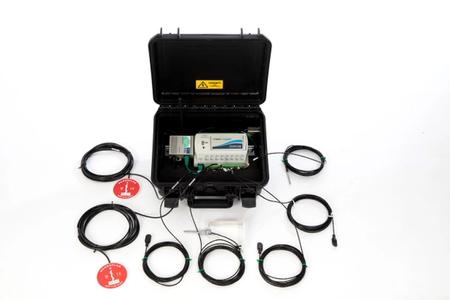Problems with calculating U-values?
Simple U-value calculations can be made by taking the thermal resistance of each material forming a layer in the construction of a particular building element and calculating the reciprocal of the sum. The internal and external faces also have resistances, which are also added as fixed values. There are numerous online U-value calculators available in order to do this.
Calculating a U-value like this may be very simple in terms of new-build when the exact makeup of an element is known and can be monitored but it's not quite as simple when we're dealing with the existing properties when we can only make an assumption or educated guess as to the exact construction of any element without invasive examination.
Compounded to the challenge of using calculated U-values is the fact that standards of installation and workmanship can negatively affect the U-value. Poorly fitted insulation, air gaps, cold bridging from fixings, wall ties etc, the different thermal properties of mortar joints and suchlike all have an effect on the actual U-value but which go unseen within the walls, floors and roof of existing properties.
Why measure U-values instead?
The in-situ U-value of building elements can vary significantly from calculated values. Instead of calculating U-values, it is possible to measure the exact U-value of existing walls, floors and roofs directly using portable equipment and sensors. Measuring provides an accurate reading of the true U-value of building elements without the issues described above. Build Test Solutions have pioneered various U-value measurements techniques which allow you to measure in-situ U-values in as little as 1 hour.
Heat Flux Measurement
The established and traditional method of measuring an in-situ U-value is using a heat flow meter along with one or more heat flux plates.
Our In-site U-value Measurement System is a portable tool that acts as a heat flow meter and consists of a data logger, 2 x heat flux plates, surface temperature sensors, air temperature sensors, and a 4G modem all incorporated into a protective case.
The system can record heat flux measurements over a number of days or weeks in order to deliver greater accuracy and quantify the in-situ U-value of building elements according to the ISO 9869 methodology.
Whilst this is a recognised and accepted method of U-value measurement it does take a minimum of 72 hours (3 days) to collect enough data for accurate results which may not always be possible.
Heat3D Infrared Thermography
An alternative method is to use our Heat3D infrared thermography based solution for measuring U-values. Heat3D is an innovative mobile app that allows you to precisely measure heat flow and U-values of building elements using a low-cost, quick and non-invasive method.
Heat3D is designed to work on iPhones and iPads and uses a portable thermal camera to obtain results in a matter of hours as opposed to days or weeks using heat flux plates. The rapid nature of the measurement enables quantified U-values that are more accurate than manual calculation methods but achievable in a similar amount of time.
The Heat3D iOS app uses Apple ARKit to detect room features such as walls, floors and ceilings and construct a 3D model. When combined with a FLIR portable camera, infrared thermal images are projected onto the 3D model showing the heat signature through each surface. Quantitative infrared thermography is used to calculate the heat loss through these surfaces and, using temperature sensors, a U-value is calculated and presented on the device.
Measuring a U value across an entire element with Heat3D can take as little as 1-hour meaning that the measurement of actual U-values is now possible in all projects.

